Advanced Conventional Modes
This is the fourth video in our Pulmonary and Ventilator Mechanics Chalk Talk Series, where our goals are to learn how a ventilator works, and how to work a ventilator. In this talk, we jump off from our review of pressure and volume control modes, to look at advanced modes that work to get the "best of both worlds:" a decreasing-flow inspiratory pattern with stable minute ventilation.
Conventional Modes
We define conventional ventilator modes as those that mimic the general inspiration-expiration pattern of physiologic breathing. This is in contrast to "non-conventional" modes of ventilatory support, including airway pressure release ventilation (APRV) and high-frequency oscillation, which abandon the inspiratory-expiratory cycle in favor of pushing the limits of gas exchange. We'll hold off on covering non-conventional ventilation until we get to ARDS.
Ramped Volume Control
In ramped volume control mode, the strategy is to limit inspiration by flow, but to set that limit as a decreasing waveform, instead of a constant value like in traditional volume control mode. This gives the advantage of a more "pressure control" shaped breath, while assuring consistent tidal volume and minute ventilation. It also allows the operator to select the "shape" of the ramp, to fine-tune the tradeoff between peak flow and stable pressure.
Pres Reg Volume Control
As a servo mode, pressure regulated volume control, also sometimes called "pressure control with volume guarantee," uses pressure-limited breaths, just like in pressure support. The key difference is that the operator sets a target tidal volume, not an inspiratory pressure. The ventilator computer monitors the achieved tidal volume with each breath, and increases or decreases the inspiratory pressure limit to match the target tidal volume.
Compliance Changes
Because one of the goals of these modes is to maintain constant minute ventilation, we look at how each would behave in decreasing patient pulmonary compliance and during a cough. Under ramped volume control, the programmed flow ramp remains constant, resulting in a constant tidal volume at the expense of increasing pulmonary pressures, and some loss to the flatness of the pressure curve. By contrast, under pressure regulated volume control, tidal volume would decrease during the current breath during an acute decrease in compliance, but the ventilator would react on the next breath by increasing inspiratory pressure.
Vol Assured Pres Support
Finally, we look at one last technique to deliver a stable minute ventilation with a pressure-limited waveform, volume assured pressure support. As the "support" word suggests, this is an interactive mode, but here we are just looking at the means by which it assures tidal volume. In this ventilator mode, the ventilator computer monitors the inspiratory flow rate during each inspiration. If it declines too quickly, the computer changes to flow-limited inspiration within the same breath, resulting in a hybrid pattern.
Now that we've explored the various ways to combine the best of the pressure and volume control worlds, it's time to explore interactive modes and patient-triggered breaths. We'll do that next time.
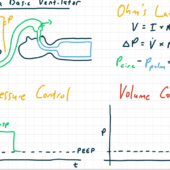
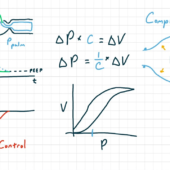
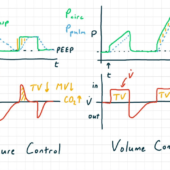
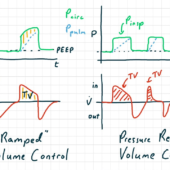
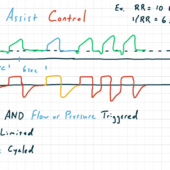
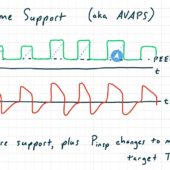
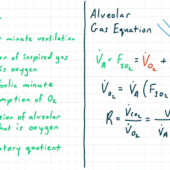
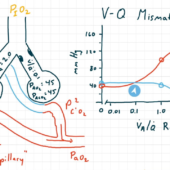
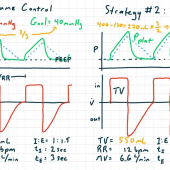
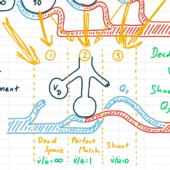
Comments
This post currently has no responses.